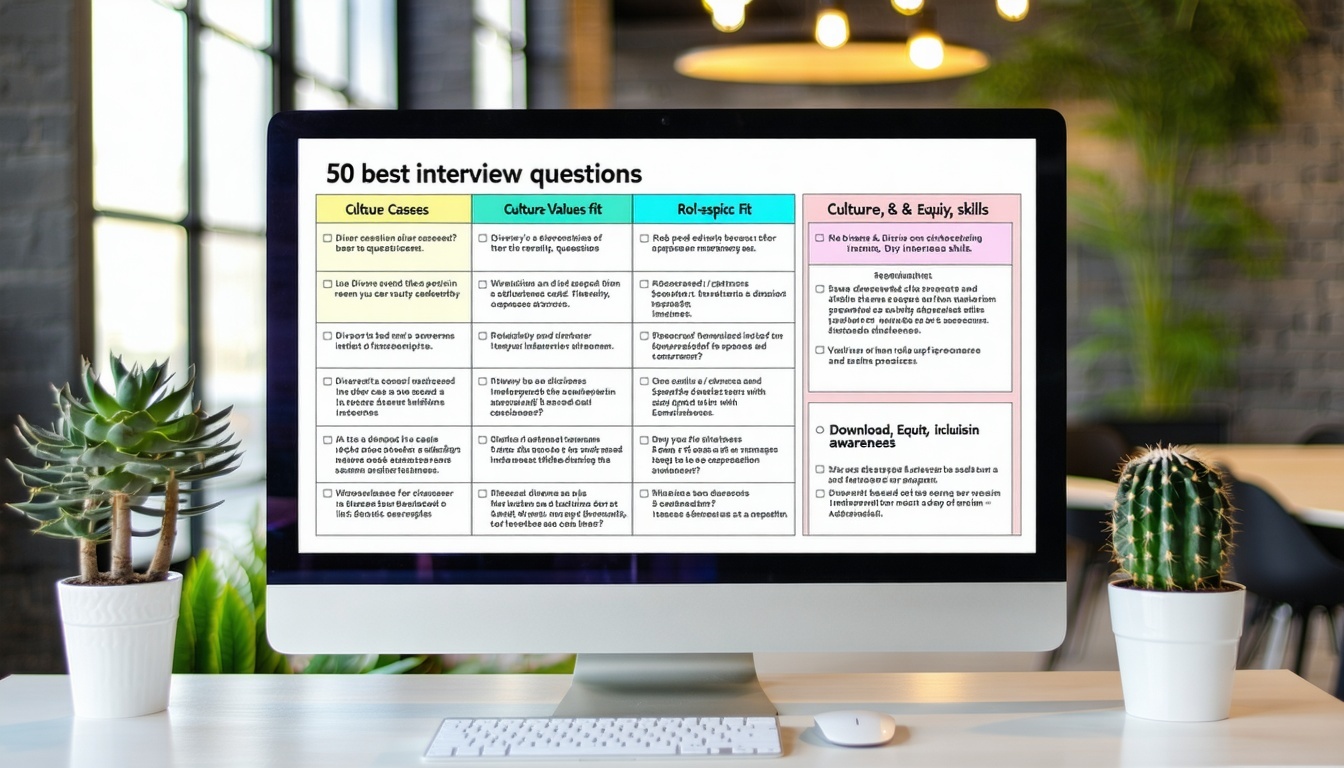
What Is HR Sourcing? Types + Best Practices + Strategies

Recruiters have more channels, technologies, and data at their disposal than ever before—but that hasn’t made finding great people any easier. HR sourcing remains one of the most time‑consuming and strategically important parts of talent acquisition. In this in‑depth guide we’ll combine the best insights from two source articles, add fresh research and field‑tested tactics, and pack everything into a single, bookmark‑worthy resource.
Table of Contents
-
HR Sourcing Defined
-
HR Sourcing vs. Recruiting
-
Why HR Sourcing Matters
-
Types of HR Sourcing
-
Top HR Sourcing Channels & Tools
-
Building a Sourcing Strategy
-
12 HR Sourcing Best Practices
-
AI‑Powered Sourcing
-
Global & Diverse Talent Sourcing
-
Key Metrics to Track
-
Common Challenges & Quick Fixes
-
The Future of HR Sourcing
-
FAQs
-
Conclusion
1. HR Sourcing Defined
HR sourcing is the proactive process of identifying, engaging, and nurturing potential job candidates before a position is formally open or a candidate has applied. Instead of waiting for résumés to land in an inbox, sourcing teams go out into the market, build relationships, and create pipelines of qualified talent that can be activated on demand.
Key elements include:
-
Research & identification – mapping the market, defining talent personas, and short‑listing prospects.
-
Engagement – initial outreach via email, phone, social media, or events.
-
Nurture – maintaining light, value‑adding contact so candidates stay warm until a suitable role appears.
Think of sourcing as demand‑generation for hiring: you fill the top of the funnel so recruitment can convert leads into hires.
2. HR Sourcing vs. Recruiting
While sourcing and recruiting are often lumped together, they solve different problems:
| Activity | Primary Goal | Typical Owners |
|---|---|---|
| Sourcing | Generate a slate of qualified, interested, and available candidates | Talent sourcers, research analysts |
| Recruiting | Guide candidates through evaluation, selection, and offer stages | Recruiters, hiring managers |
In small companies one person may do both; at scale, specialization boosts speed and quality.
3. Why HR Sourcing Matters
-
Speed to hire – Having pre‑vetted candidates can cut time‑to‑fill by 30‑50 %.
-
Quality of hire – Directly targeting high performers raises the bar versus “apply‑and‑see.”
-
Cost savings – Fewer advertising dollars, fewer agency fees.
-
Competitive advantage – Scarce skills get locked in before competitors even post a job ad.
-
Diversity & inclusion – Purposeful outreach broadens representation better than passive methods.
4. Types of HR Sourcing
| Type | When to Use | Example Tactics |
|---|---|---|
| Active sourcing | Roles with many public jobseekers | Job‑board resume databases, LinkedIn keyword searches |
| Passive sourcing | Hard‑to‑fill or senior positions | Personalized email sequences, network referrals |
| Direct sourcing | Executive or niche hires | Target list of 20–30 people, confidential outreach |
| Internal sourcing | Leverage existing employees | Internal mobility platforms, skills inventories |
| Co‑sourcing / RPO | Need scalability | Partner with a recruitment‑process‑outsourcing firm |
| AI‑powered sourcing | High‑volume or global hiring | Tools like EquaTalent Virtual AI Recruiter that automatically find and screen talents |
5. Top HR Sourcing Channels & Tools
-
Professional networks – LinkedIn, GitHub, Behance.
-
Social media & niche communities – Reddit, Discord servers, Stack Overflow.
-
Employee referrals – Often yield the highest conversion and retention rates.
-
Boolean & semantic search engines – TalentBin, HireEZ.
-
Job‑board resume databases – Indeed, Monster.
-
Industry events & meet‑ups – Conferences, hackathons, user groups.
-
Academic partnerships – Universities, bootcamps, research labs.
-
AI sourcing platforms – EquaTalent.
Tip: Map each channel to talent personas. Designers might hang out on Dribbble; machine‑learning engineers might answer Kaggle competitions.
6. Building a Sourcing Strategy
Follow this 10‑step framework adapted from best practices in the source articles:
-
Align with business goals – Which teams will grow? What skills will matter in 6–18 months?
-
Clarify success metrics – E.g., number of qualified leads per week, response rate, pipeline diversity.
-
Build candidate personas – Go deeper than job titles: motivations, career paths, preferred channels.
-
Choose sourcing channels – Based on where personas “live” online and offline.
-
Craft outreach messaging – Personalized, value‑led, concise.
-
Select enabling technology – CRM, Chrome extensions, AI platforms.
-
Create a content library – Employer‑branding assets, role briefs, salary frameworks.
-
Set SLAs with recruiters & hiring managers – Define hand‑off points.
-
Pilot & iterate – Run a two‑week sprint, review metrics, refine.
-
Scale & automate – Once the playbook is proven, layer on automation and RPA.
7. Twelve HR Sourcing Best Practices
-
Start with crystal‑clear job intake – Misalignment here kills pipelines later.
-
Write inclusive search strings – Avoid gendered or culturally narrow keywords.
-
Personalize every first touch – Mention a project, article, or shared connection.
-
Use multichannel sequences – Blend email, InMail, voice notes, even WhatsApp where culturally appropriate.
-
Leverage talent rediscovery – Your ATS is a goldmine of silver‑medalist candidates.
-
Build referral flywheels – Incentivize employees, alumni, and even external partners.
-
Attend (and host) events – Virtual round‑tables, IRL breakfasts, community Slack AMAs.
-
Practice continuous pipelining – Source even when roles are on hold so you’re never starting from scratch.
-
Track diversity early – Measure representation at the top of the funnel, not just at hire.
-
Nurture with value – Send curated content, invite to webinars, share interview prep.
-
Measure and A/B test – Subject lines, send times, call‑to‑action phrasing.
-
Automate intelligently – Hand repetitive tasks to AI so humans focus on relationship‑building.
8. AI‑Powered Sourcing
Manual sourcing caps at human bandwidth. AI removes that ceiling by automating three things:
-
Candidate discovery – Machine learning scans millions of profiles in seconds.
-
Screening & matching – Algorithms rank fit based on skills, experience, and cultural signals.
-
Engagement at scale – Natural‑language generation drafts hyper‑personalized outreach.
Case in Point: EquaTalent Virtual AI Recruiter
EquaTalent can:
-
Automatically source talent while you sleep.
-
Conduct live video interviews with an AI avatar.
-
Score and shortlist candidates through computer‑vision emotion recognition.
Results: customers report 3× faster hiring and 10× recruiter capacity while cutting hiring costs by 20 %.
How does AI help HR teams streamline candidate sourcing? By reducing manual data entry, surfacing hidden talent, and feeding recruiters warm, data‑rich leads instead of cold names.
9. Global & Diverse Talent Sourcing
-
Workforce planning first – Decide whether to open entities, hire contractors, or use an Employer of Record.
-
Market mapping – Evaluate salary benchmarks, talent density, and cultural factors.
-
Localization – Tailor outreach messages to language norms and employment laws.
-
Inclusive sourcing – Partner with affinity groups, attend DEI career fairs, write mission‑driven content.
-
Compliance – Mind data‑privacy (GDPR, CCPA), worker classification, and local labor codes.
10. Key Metrics to Track
| Funnel Stage | Metric | Healthy Benchmark |
|---|---|---|
| Discovery | Qualified prospects per week | Role‑dependent – 30–60 for mid‑level tech |
| Outreach | Response rate | 25–35 % (personalized sequences) |
| Engagement | Screen‑to‑interview conversion | 40–50 % |
| Pipeline | Time‑in‑stage | < 7 days between touchpoints |
| Quality | Offer‑to‑acceptance | 80 %+ |
| Efficiency | Cost per sourced hire | 20–30 % less than agency fees |
11. Common Challenges & Quick Fixes
| Challenge | Root Cause | Quick Fix |
|---|---|---|
| Low response rates | Generic messaging | Hyper‑personalize and test send times |
| Talent shortages | Narrow search criteria | Broaden skills, source globally |
| Pipeline drop‑off | Slow feedback loops | Set SLAs; use ATS nudges |
| Bias creeping in | Subjective screening | Blind‑review resumes; audit algorithms |
| Data chaos | Multiple spreadsheets | Centralize in a CRM or AI platform |
12. The Future of HR Sourcing
-
Generative AI content – Dynamic job pitches tailored to each candidate’s online footprint.
-
Predictive talent intelligence – Algorithms forecast turnover risk and proactively source back‑fills.
-
Skills‑based hiring – Less credential focus, more on demonstrable skill portfolios.
-
Experience analytics – Real‑time sentiment analysis during video interviews.
-
Total talent sourcing – Blending employee and contingent workforce planning within one pipeline.
13. FAQs
What is HR sourcing? It’s the proactive search for and engagement of potential candidates ahead of a formal application process.
What is sourcing in HR? Same as above—focusing on the “top of funnel” tasks.
What does HR sourcing mean? It means building a pipeline of qualified talent so hiring can move faster and more strategically.
How does AI help HR teams streamline candidate sourcing? AI automates candidate discovery, screening, and outreach, freeing recruiters to build relationships.
Types of sourcing in HR? Active, passive, direct, internal, co‑sourcing, and AI‑powered sourcing.
HR tools for talent sourcing? LinkedIn Recruiter, EquaTalent, HireEZ, SeekOut, Gem, Beamery.
Active sourcing HR definition? Targeting candidates who are actively looking for jobs.
Sourcing meaning in HR? Same as HR sourcing—proactively finding talent rather than waiting for applicants.
14. Conclusion
HR sourcing sits at the intersection of marketing, sales, and human relationships. Master it and you’ll accelerate hiring velocity, elevate workforce quality, and gain a decisive edge in the talent market. Whether you’re leaning on classic referral programs or cutting‑edge AI platforms like EquaTalent, the fundamentals remain: clear goals, targeted outreach, consistent nurturing, and continuous measurement.
Use the frameworks, tools, and best practices in this guide as your playbook. Bookmark it, share it with your team, and revisit it each quarter to keep your sourcing engine running at peak performance.
Next Steps
-
Audit your current sourcing channels against the checklist above.
-
Pilot one AI‑powered automation tool and compare pipeline metrics.
-
Build a 90‑day roadmap to implement the 12 best practices.
Happy sourcing!

